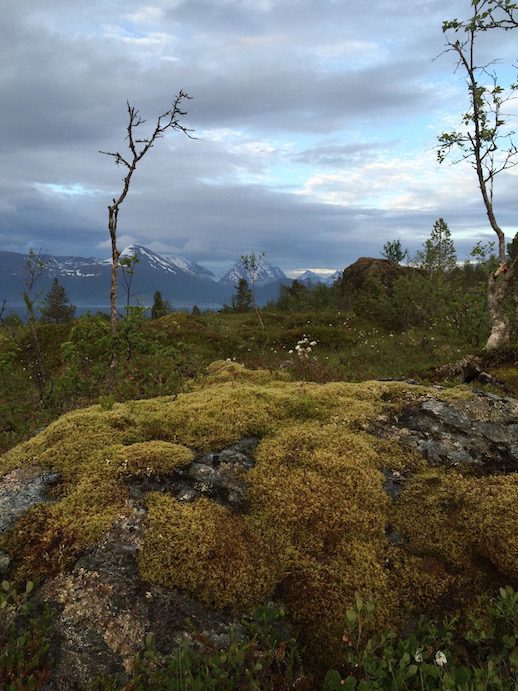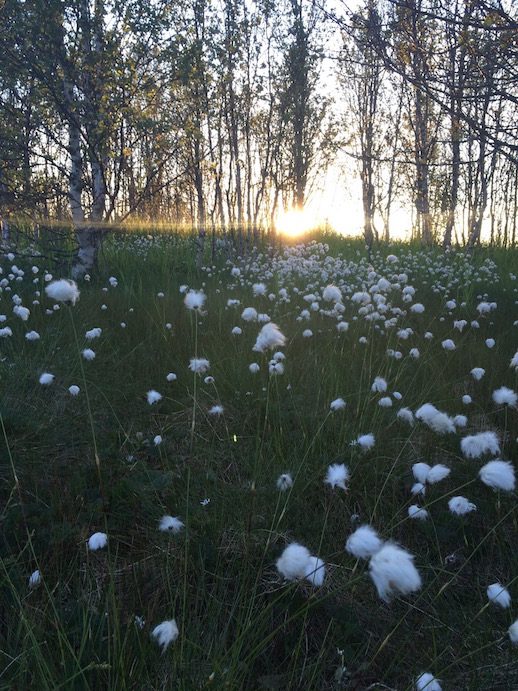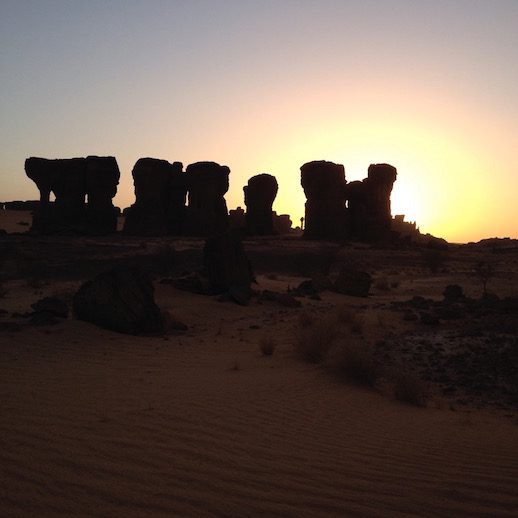…In which, as the year comes to its end, our friends and collaborators look back on the past twelve months and share their moments;
Shadows – Through the autumn of 2016 I watched a pair of lost or abandoned underpants making a slow passage from one side of a quiet street in Bristol to the other. I don’t know how they got there and I never saw them actually move but they crossed the road in the course of a couple of months. A pair of black boxers with a purple elastic waistband – menswear, though not my style. I’d first spotted them when I rode along a cobbled gutter and felt some pulpy resistance beneath my tyres. I looked down and could tell straight away what I was riding over. My cycle route to work goes along this street and I noticed the pants again the next day and from then on I started looking out. Previous wheels had mangled them, pressing them to the hard black road, but they’d retained their shape. Each time I saw them they were in a different place. My sightings accumulated like frames in a stop-motion film: a flip-flop of black on black. It barely rained through the season and the planes and limes along the street held onto their yellowing leaves like opened purses of coins. But the pants had got sodden at some point and kept their damp even as they inched out of the gutter towards the dryer tarmac of the higher road. Perhaps they took in the dew each morning.
What I thought about these pants was influenced by how they looked, how far they’d travelled since I’d last seen them, and how the weather of each day lit or drowned them, making them appear sculptural or trashy, allowing them to sing or to moan. Heavy rain, when it did come once, must have peeled them from the road and rafted them over its camber, otherwise I assume they moved when caught by a passing tyre and were inched along by its percussion and drive. Perhaps on gusty days the wind might have lifted one corner and begun an action that a car tyre finished. Mostly what they made me think about was the forgotten and the overlooked, movement and journeying, immigration and emigration, arrivals and exits, crossings and passages – the themes of my year and, no doubt, of many others’ too. Sometimes the look of the pants, when they seemed to clothe the tarmac around them on the road, made me guess at the stomach that would have risen from the waistband and the legs that would have run from the soft fabric. Sometimes they were all about sex, mountainous and sticky. Sometimes they were nappies, filthy cloths. One day I saw a sullen sun. The day after it was a badly flipped pancake. Meat, they put me in mind of, often, old meat, like the dark old-blooded meat of a road-killed deer.
There are many ways of going out of this world. I spend too much of my life driving and pass hours noticing the dead in the places where timelines have crossed. Most of us see more bodies on our roads than anywhere else and mostly we pass on by. Once I was there before a human casualty was hurried away from a central reservation. The poor man, under his makeshift shroud of an old floral quilt, thrown as he’d been from his van, hovered at the edges of my dreams for weeks afterwards. I’ve killed enough other species. Among the countless barely clocked, the sparrow dust and pheasant thunks, the rabbit stews and hedgehog punctures, a roster of the remembered has gone into my head and lurks there at the back of the shop: a blackbird once near Troy in Turkey that my windscreen launched, a soot bomb, clean over another car, and which I watched then bouncing into a olive grove, each bounce winning a lower arc, a ball hit to the outfield, with the bird dying a second time as it rolled to a stop in the dust; a lilac-breasted roller at Tsavo in Kenya that was grated into bright scarves of feathers and blood by my radiator grill; a month or so when every journey along the A14 in Cambridgeshire featured a new slain barn owl in crashes of burnt cream and human skull forms; the faltering pulse then cooling body of a rufous-cheeked nightjar, like breeze-fanned embers, next to the corpses of the moths it had been eating, all the dead gritted with warm sand, the bird blinded then stunned by my mooning headlights down a track on a Zambian farm; the pucker of the dying eyes of a cliff swallow in my hands, near the Little Bighorn battlefield in Montana, that my car had flushed and which I felt obliged to stop and attend to having watched its escape flight being sucked up into the engine of an oncoming saloon; the sheep my father hit, when I was a child, and carried back to our car with the same embrace that he used to fetch my sister and me from our curved sleeps on the back seat when we arrived home after hours; there are more and there will be others.
What strikes me now about those pants is their persistence. Road surfaces are not porous but most bodies don’t last long. The pummel of wheels flattens almost everything to oblivion: all that spilled matter somehow pushed through the tough skin of the road and rubbed out into its stony mix, so much bone and blood quickly gone to nought. But the bag that holds everything often lingers long after its contents have emptied. The last to go is the first that made contact. The fur of mammals and the feathers of birds, even the wet skins of slugs and frogs and toads, hold out at the surface whilst their innards bleed into the road. The tarpaulin of a roe deer; a gouache of polecat; a badger shrugging its houndstooth at the barred door of its sett; the lost slipper of a hedgehog slid under a bed. These coats, which we think of as us, our faces, what the world sees, we leave at the door whilst all our insides have gone on ahead. Perhaps we hope to return to put them on once more.
At the wheel, we grow used to registering under our tyres the little rises and bumps of these leftovers as we travel the great mortuaries. We are so many princesses and there are so many peas. And, once we begin to notice them, the bumps begin to tell. In the same way, Butcher now seems to me a disarming – a mutilating – word to paint above a shop because this year I travelled in rural Northern Ireland and saw shops called Fleshers, and drove through rural South Africa and passed Butchery after Butchery. The blood ran back as the outside of the word showed me its insides, the skin the soul.
My pants climbed the camber for a week and, each time I saw them, they’d also crept some feet down the road in the direction of travel. I lost them then until a month later, in the middle of November, when they’d near slipped my mind, I spotted them again, two hundred yards back down the same road, a black slap, on a return journey towards the gutter where they’d started. I wasn’t sure then and I still don’t know if this makes me happy or sad.
Reflections – The other half of the year was brighter. It had much to do with the getting of light, which is what happens between December and June to us in the north; but it was also concerned with coming and going and crossings and passages. I did my best to follow the spring north from the sandy thorn scrub below the Sahara to the end of the European landmass above the Arctic Circle at the top of Norway. I have been making this journey in part for every year of my conscious life, moving with the season, leaning towards the sun, looking out for the birds that fly through the year. My best token – totem too – of all this is the redstart: a small, bright, migratory thrush. This year I wanted as many redstarts in as many places as I could find.
I started the year thousands of miles from any, near Tromsø in the arctic dark where the day was squeezed to just a crack of light at its cold rim and the grey of the sky met the slate of the sea via pied mountainsides of snow and stone. In a fjord, killer whales cut between humpbacks, trading more greys and blacks as they surfaced; on the shore white-tailed eagles and winter white willow grouse did the same, granite severities and snow balls eking their living from a frozen impossible dark.
I was back in the same place six months later under impossible light. At midsummer the birch woods on the bogs of Troms and Finnmark are full of redstarts. One male sang for twenty-two hours of one day just behind the house I was staying in. Three cycles of song every minute. Four thousand while I sat stunned under the stretched crown of the year. In a second place, another did the same alongside a bluethroat, with both singing next to my tent, through a white night and the jewellery of mosquitoes, whilst the European referendum was being taken and counted. Both sang on, under the continuing sky, after the results; yesterday having somehow not ended whilst today had already long begun.
Between these northern hours I found redstarts at the beginning of our northern spring just as they were leaving their winter quarters in the great thorny spread of the Sahel in southern Chad. All of Europe’s redstarts must cross the Sahara twice a year, south in the autumn, north in the spring. How hard it is to get any purchase on that thought into my head: this year I’ve seen redstarts at home in their summer and at home in their winter, but it hasn’t made it any easier to grasp how, this late November night, as I am typing under a lamp with my back to the dark of a Bristol street, those birds I saw singing the midnight sun are now sleeping in a thorn thicket under desert stars. Camels are their neighbours there, reindeer in northern Scandinavia. And people move as they moved too.
I must write about all this and these birds now, but I’ll want to see them again, and the season too, in the coming year. It is always like that. Again, begin again, again.
Tim Dee on Caught by the River / on Twitter


